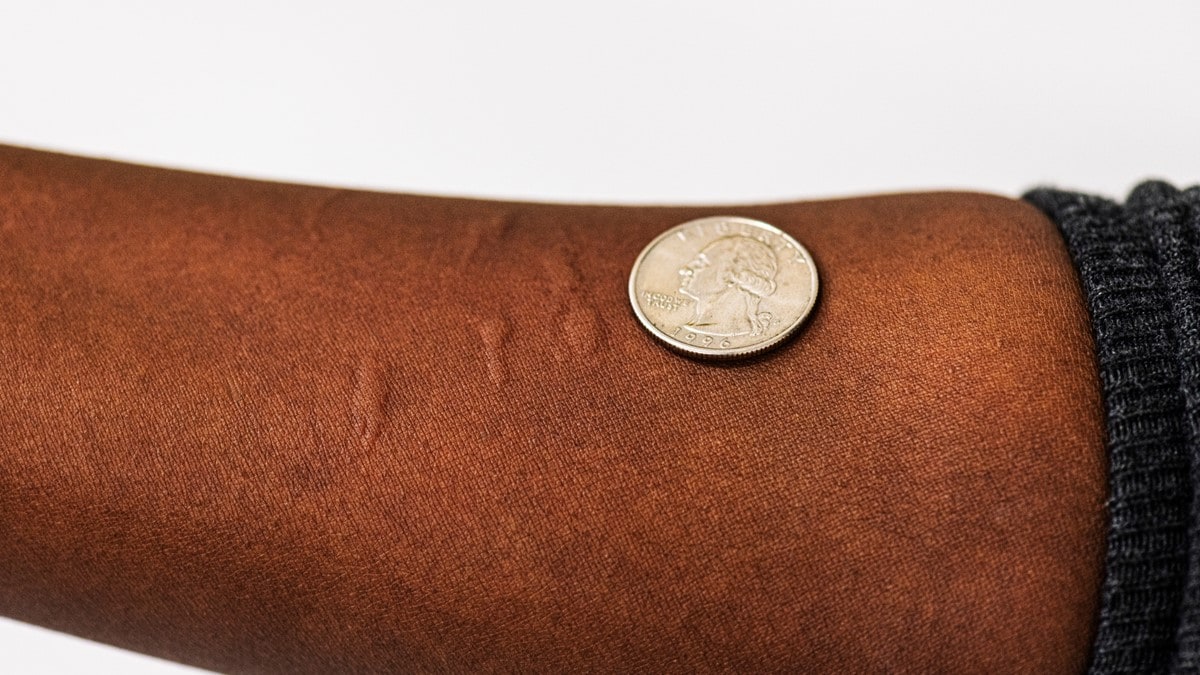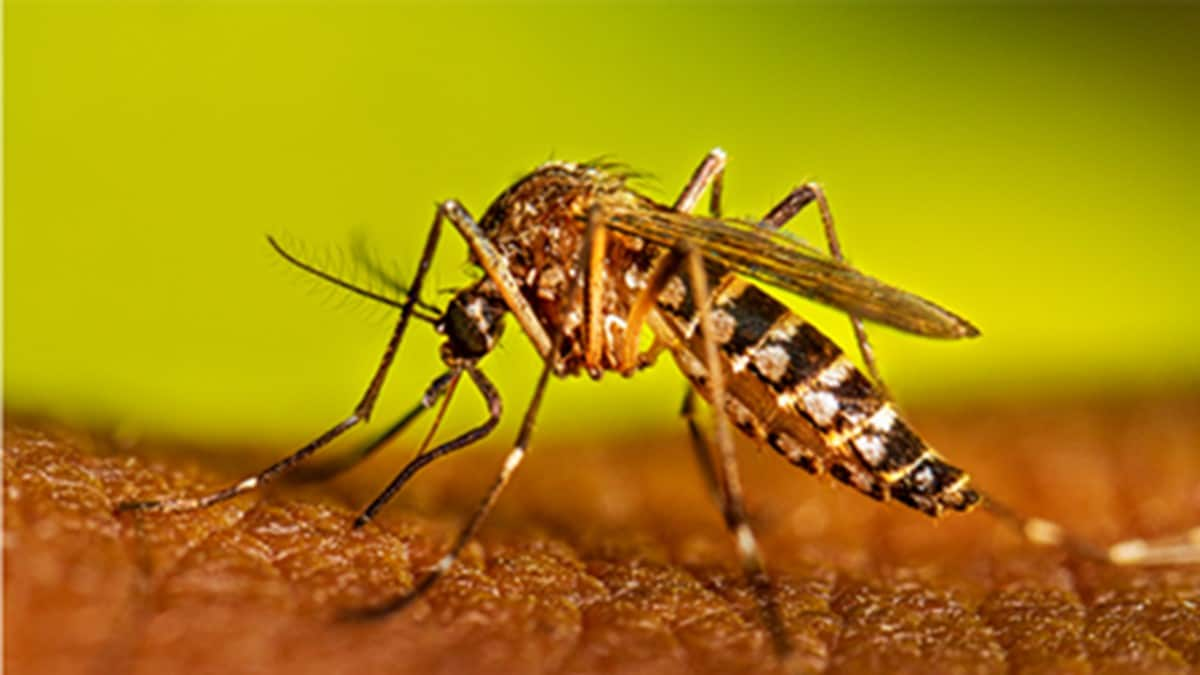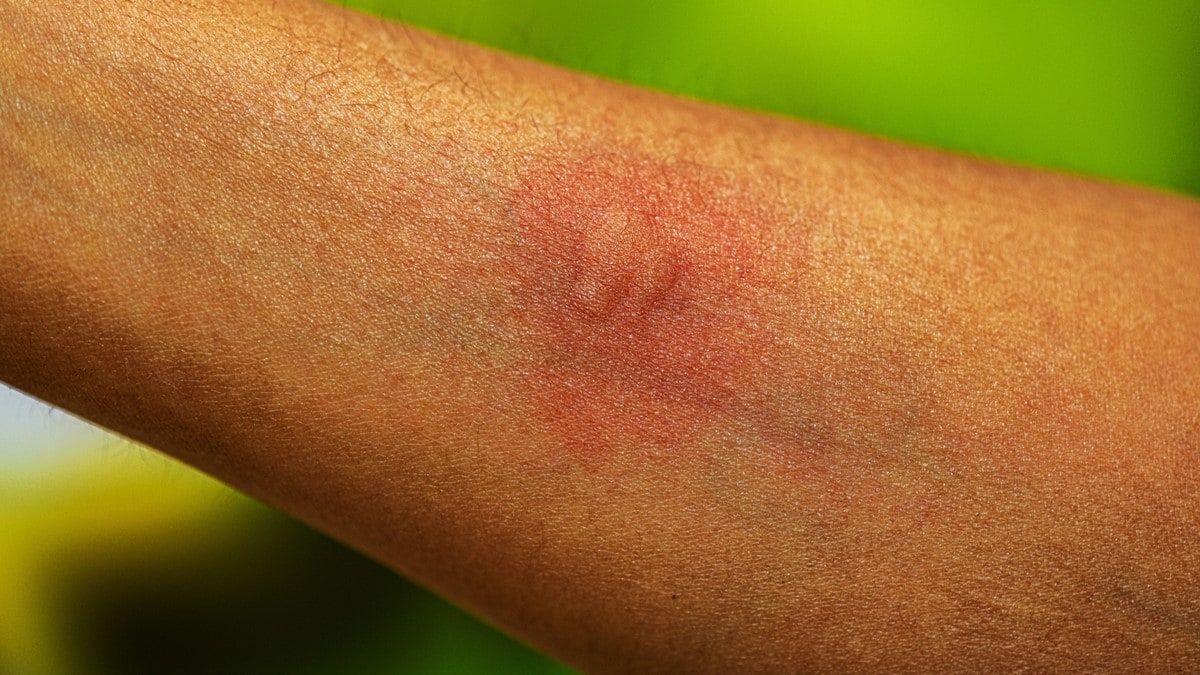Key points
- Female mosquitoes bite people and animals to get a blood meal.
- Most female mosquitoes cannot produce eggs without a blood meal.
- Male mosquitoes do not bite people and animals.
- People react differently to mosquito bites.

What happens when a mosquito bites you
When a mosquito bites you, it pierces the skin using a special mouthpart (proboscis) to suck up blood. As the mosquito is feeding, it injects saliva into your skin. Your body reacts to the saliva resulting in a bump and itching.
Some people have only a mild reaction to a bite or bites. Other people react more strongly, and a large area of swelling, soreness, and redness can occur.

Signs and symptoms
Mosquito bite signs
- A puffy and reddish bump appearing a few minutes after the bite
- A hard, itchy, reddish-brown bump, or multiple bumps appearing a day or so after the bite or bites
- Small blisters instead of hard bumps
- Dark spots that look like bruises
Severe reactions can occur
- In children
- In adults bitten by mosquito species they haven't been exposed to previously
- In people with immune system disorders
More severe reactions
- A large area of swelling and redness
- Low-grade fever
- Hives
- Swollen lymph nodes

Complications
Infected bite
- Do not scratch bites. They can become infected.
- An infected bite may appear red, feel warm, or a red streak may spread outward from the bite.
- See a healthcare provider if symptoms worsen.
Mosquito-borne germs
- Mosquitoes spread germs (viruses, parasites) through bites that can make you sick.
- Viruses like West Nile, dengue, Zika
- Parasites like malaria
- Viruses like West Nile, dengue, Zika
- A mosquito gets infected with a germ when it bites a person or animal that is infected.
- The infected mosquito can spread germs to other people or animals through bites.
- Not everyone infected with a mosquito-borne germ gets sick.
Mosquito-borne viruses
- Cache Valley
- Chikungunya
- Dengue
- Eastern equine encephalitis
- Jamestown Canyon
- Japanese encephalitis
- Rift Valley fever
- Ross River
- St. Louis encephalitis
- Usutu
- West Nile
- Western equine encephalitis
- Yellow fever
- Zika
Mosquito-borne parasites
- Dirofilariasis (dog heartworm)
- Lymphatic filariasis
- Malaria
Prevention
- Use Environmental Protection Agency (EPA)-registered insect repellents.
- Wear loose-fitting, long-sleeved shirts and long pants.
- Buy permethrin-treated clothing and gear or treat items yourself.
- Control mosquitoes inside and outside.
- Prevent mosquito bites when traveling overseas.
Treatment
- Wash the bite and surrounding area with soap and water.
- Apply an ice pack for 10 minutes to reduce swelling and itching. Reapply ice pack as needed.
- Apply a mixture of baking soda and water, which can help reduce the itch response.
- Mix 1 tablespoon baking soda with just enough water to create a paste.
- Apply the paste to the mosquito bite.
- Wait 10 minutes.
- Wash off the paste.
- Mix 1 tablespoon baking soda with just enough water to create a paste.
- Use an over-the-counter anti-itch or antihistamine cream to help relieve itching. Follow the product label directions.
Resources
- Activity book for kids in the United States: Mosquito Bites Are Bad! (English)
- Activity book for travelers: Mosquito Bites Are Bad! (English)
- Activity book for travelers: Mosquito Bites Are Bad! (Spanish)
